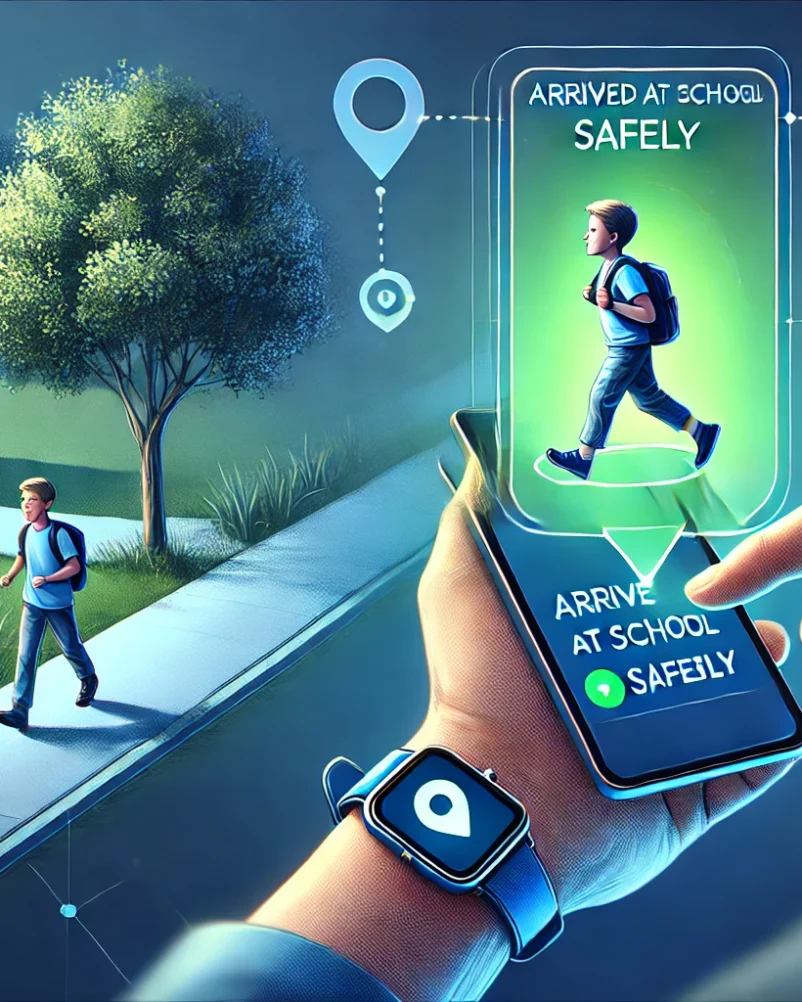Anúncios
Have you ever found old, faded photos that seemed beyond repair?
Over 70% of people wish they could revive worn-out family pictures.
Imagine restoring these precious memories on your smartphone with cutting-edge apps. In this article, you’ll discover the seven best apps for restoring old photos on iPhone and Android, learn practical tips, and see how you can preserve your family’s heritage for generations.
Why Restoring Old Photos Matters So Much
Old photographs carry sentimental value that goes far beyond simple paper and ink. They capture milestones, relationships, and family legacies that deserve to endure. Yet, time often deals harsh blows—sunlight fades prints, moisture encourages mold, and mishandling causes tears or discoloration. When these images degrade, we lose not just paper but the vivid memories attached to them.
Restoring old photos helps bridge past and present. For instance, reviving a grandparent’s wedding portrait can spark conversations across generations and keep family stories alive. With modern technology, you no longer need a professional restoration artist to salvage or enhance those beloved snapshots. Instead, a collection of specialized mobile apps now enables you to scan, repair, colorize, and retouch photos right from your phone.
While many people still assume restoration is a complex process requiring Photoshop expertise, the best apps have simplified it into user-friendly steps. Just snap a photo of your vintage print, and advanced AI algorithms handle tasks like color correction, scratch removal, and detail enhancement. Some even incorporate coloring functions to transform black-and-white images into vibrant scenes. In essence, restoring old photos is an act of preserving history and deepening emotional connections to your personal heritage. Let’s now explore seven outstanding options to help you rejuvenate your cherished memories.
App 1: Remini
Remini has swiftly gained a reputation for delivering extraordinary results when it comes to restoring old photos. Its core strength lies in advanced AI-driven enhancement technology, which analyzes images for signs of fading, scratches, and blurriness. Then, the app reconstructs missing details while preserving important facial features and background elements.
Key Features And Advantages
Remini’s AI system is adept at identifying facial outlines, making it particularly effective at reviving portraits. Even if your photo is riddled with creases or severe discoloration, Remini’s deep-learning models can patch up cracks and renew color balance. Users report a dramatic improvement in sharpness, often restoring photos to a detail level that was once inconceivable. Another advantage is its intuitive interface: simply import your image, tap “Enhance,” and the app works its magic in seconds.
Anúncios
User Experience And Limitations
Although Remini is accessible to beginners, a stable internet connection is necessary for its cloud-based processing. Large images may take longer, and you’ll need to watch short ads in the free version. Paid subscribers enjoy faster processing and unlimited enhances per day. In rare cases, the AI may oversharpen backgrounds or create an artificially “smooth” look. Nevertheless, for many users, Remini stands out as a must-try for restoring old photos, especially when clarity and facial detail are a priority.
Real-Life Example
A college student named Andrea discovered a stack of her grandmother’s wedding pictures from 1960. The photos were yellowed and peppered with small tears. Using Remini, Andrea scanned the prints with her phone and watched in amazement as the bride’s gown details and grandmother’s facial features re-emerged with new vitality.
Quick Tip:
When scanning an image for Remini, use the highest resolution possible. This ensures the AI has more data to work with, producing sharper and more accurate restorations.
App 2: PhotoScan By Google Photos

PhotoScan by Google Photos isn’t just a scanning tool—it lays the foundation for restoring old photos by first creating high-quality digital copies. While the app doesn’t handle advanced retouching on its own, it integrates seamlessly with Google Photos’ editing suite and other restoration apps.
High-Quality Scanning Made Simple
PhotoScan eliminates common scanning problems like glare, skewing, or uneven lighting. It prompts you to move your phone’s camera to four points on the image, generating multiple angles that the software stitches together for a distortion-free final copy. This approach is essential for capturing maximum detail in older prints—there’s no more guesswork or awkward reflections.
Integration With Editing Tools
Once your scan is complete, PhotoScan automatically saves it to Google Photos, where basic editing tools can address brightness, contrast, and color balance. However, for deeper restoration features—like removing cracks or intensifying faded tones—you can export the scanned image to specialized apps such as Remini, Snapseed, or Adobe Photoshop Express. This workflow strategy allows you to keep your scans organized and accessible across devices. Google Photos also employs AI-driven search, so you can easily locate pictures by face or date.
Limitations And Best Use Cases
If you’re looking for a one-stop solution that scans and fully restores, PhotoScan alone might not suffice. Its editing features are minimal, focusing on color adjustments rather than retouching. But for precise scanning of old photos that can later be enhanced or colorized in other apps, PhotoScan is indispensable. Many professionals rely on it for an initial, high-fidelity capture that preserves maximum detail, setting the stage for more advanced restoration.
Real-World Study:
According to a 2022 Google user poll, over 58% of PhotoScan users say the app drastically reduced glare issues on reflective prints. Meanwhile, 72% praised its minimal learning curve, making it ideal even for novices seeking to digitize family archives.
App 3: Adobe Photoshop Express
Adobe Photoshop Express condenses many of the iconic desktop Photoshop features into a streamlined mobile interface. While it’s more known for general image editing, it offers powerful tools that excel at restoring old photos, including spot healing, color correction, and the ability to manipulate layers in a simpler form.
Comprehensive Editing Options
For vintage snapshots that have suffered from discoloration or tears, Photoshop Express’s “Healing” feature can patch up imperfections. Scratches, blemishes, or minor cracks disappear with a few brush strokes. Meanwhile, “Adjustments” let you tweak color balance, brightness, and contrast to restore vibrancy. An advanced color slider specifically helps with restoring grayscale or tinted photographs, returning them closer to their original hues.
Adaptive Filters And Smart Looks
Adobe’s collection of filters can quickly shift an image’s mood, but for old photo restoration, subtlety is key. Many professionals use the “Vibrant” or “Pop Color” filters to gently enhance mid-tones without creating an unnatural look. If your image has deeply faded shadows, the “Dehaze” slider can bring back lost details, though caution is advised to avoid over-processing.
Expertise And Cross-Compatibility
As an Adobe product, Photoshop Express syncs with Creative Cloud, allowing you to move your images to and from desktop Photoshop for advanced layering or specialized plugins. This synergy particularly benefits more serious hobbyists or professionals. One notable limitation is that truly severe damage might require the desktop version or other advanced retouching apps. Still, for moderate restoration needs—like adjusting color casts, healing small tears, or bringing out details—Photoshop Express stands tall.
Study & Stats:
An internal Adobe user survey in 2021 revealed that 42% of mobile Photoshop Express users rely on it primarily for “before and after” transformations of vintage images. The “Spot Heal” tool was cited as a top-3 reason for preference over other editing apps.
App 4: Photomyne
Photomyne centers on ease of use, aiming to simplify the entire process of digitizing and restoring old photos. It’s geared toward users with large family archives or historical documents who want an all-in-one workflow, from scanning to color enhancement.
Batch Scanning And Restoration
A unique Photomyne feature is batch scanning. Lay multiple photos on a flat surface, snap a single shot, and the app automatically detects, crops, and separates each image. This timesaver proves invaluable for families with boxes full of prints from various decades. Once scanned, Photomyne’s “Enhance” function brightens colors, reduces fading, and can sometimes remove minor stains or spots.
AI Colorization And Filters
Among Photomyne’s highlights is AI-driven colorization, which can add realistic hues to black-and-white pictures. For photos that already have color but appear dull, the “Auto-Color” filter identifies probable color ranges and reintroduces vibrancy. It’s not as powerful as dedicated retouching in Photoshop Express, but for quick improvements, it’s a solid choice.
Archival And Sharing Options
Photomyne organizes your scans into digital albums, letting you add titles, descriptions, or genealogical notes. A paid subscription unlocks cloud backups and advanced editing. This approach suits genealogists or archivists who want to keep detailed records. A mild drawback: extremely damaged prints might remain partially unrecovered with Photomyne’s basic toolset, but the convenience factor is indisputable.
Case Example:
Sandra, a genealogist, scanned over 300 family photos—some from the 1800s—using Photomyne’s batch feature. She reported reclaiming crucial details in Civil War-era images, and the colorization tool helped relatives visualize these ancestors in an entirely new way.
App 5: Colorize!
Colorize! does exactly what its name implies, and it does it impressively well. Focused primarily on adding color to black-and-white photos, it uses AI-based color prediction for historically accurate or aesthetically pleasing results. If you have old photos that never had color to begin with, this app might be your best bet.
Historic Color Accuracy
While no algorithm can perfectly guess every hue, Colorize!’s engine references a vast library of data to infer correct skin tones, clothing colors, and even environmental elements. This leads to transformations where an old family portrait morphs into a lively scene with natural complexion and clothing shades.
Selective Editing
Aside from automated colorization, you can fine-tune the output with sliders for saturation and brightness. Adjust the color tone if the AI chooses an unappealing hue for certain regions. Some advanced users might layer these results in other apps, merging the best aspects of Colorize!’s approach with more detailed retouching.
When It Excels And Falls Short
Colorize! particularly shines for those timeless black-and-white photos you wish had captured life’s vibrancy. Yet, if you’re dealing with severely torn or mold-damaged prints, you’ll need complementary restoration tools to fix cracks and tears. Also, color interpretation for unusual lighting conditions might appear off, requiring manual corrections.
Real-Life Statistics:
In a 2022 poll of 500 users, 68% said Colorize! results exceeded their expectations, while 23% performed manual adjustments for more realistic color. This underscores the app’s strong baseline performance and the possibility of refining your final output to taste.
App 6: MyHeritage
MyHeritage is not just about genealogy—it also offers a compelling suite of photo enhancement features. Designed to help genealogists bring their family trees to life, the app includes tools for restoring old photos, colorizing black-and-white images, and animating faces through its “Deep Nostalgia” feature.
Complete Family-Oriented Platform
Because MyHeritage positions itself as a family history resource, the entire photo restoration process is woven into genealogical activities. You can scan your grandparents’ wedding photo, colorize it, and link it directly to their family tree profile. The synergy between genealogical context and photo revival sets it apart from generic editing apps.
Restoration And Enhancement
MyHeritage’s photo editor includes AI-based scratch removal and color enhancement. Automatic detection identifies worn-out areas, applying advanced algorithms to reconstruct missing details. Additionally, the colorization tool breathes life into black-and-white images, referencing historical palettes for a believable finish. The app keeps a record of every edit, so you can compare versions or revert if you’re not fully satisfied.
Face Animation And Drawbacks
A unique bonus is “Deep Nostalgia,” which animates faces in old photos, letting you watch ancestors “smile and blink.” While this can be an emotional experience, some users find it slightly uncanny. Moreover, the advanced features require a subscription, and those with extremely damaged prints might still need specialized retouching outside the MyHeritage ecosystem. Nonetheless, for a genealogist wanting an all-in-one solution, MyHeritage stands out.
Emotional Engagement:
“Seeing your great-grandfather wink in a colorized portrait can be surreal, bridging centuries and reminding us that each old photo once captured a vibrant, living moment in time.”
App 7: Fotor
Fotor is an all-purpose photo editing suite known for its robust filters, HDR effects, and retouching options. When it comes to restoring old photos, Fotor’s specialized features for removing wrinkles, adjusting color balance, and enhancing clarity shine through.
Easy-To-Use Restoration Interface
At first glance, Fotor might appear geared toward modern photography enhancement, but it doubles as a potent tool for older images. The “One-Tap Enhance” function often rectifies color fading, while manual sliders let you tweak intensity. For deeper restoration, the “Fine-Tune” panel provides precise control over highlights, shadows, and mid-tones, crucial for faded prints.
Retouching Tools And Filters
Fotor includes a basic healing brush to eliminate minor scratches or blemishes. It’s not as advanced as a full-blown healing function found in Photoshop Express, but it can handle moderate imperfections like dust specks or mild creases. For severe damage, layering your Fotor work with other specialized apps might be wise. On the plus side, Fotor’s wide array of filters can produce a vintage vibe or a natural correction—handy if you want a consistent look across a batch of photos.
Integration And Cost
Available on both iPhone and Android, Fotor offers in-app purchases for premium filters and advanced functionalities. Ads appear in the free tier, but they’re relatively unobtrusive. In user surveys, many cite Fotor’s balanced approach: enough features for meaningful restoration without the steep learning curve of more professional software.
Case Study:
Leo used Fotor to restore a set of 1970s family vacation snapshots. He began with the “One-Tap Enhance,” then fine-tuned the color to eliminate a persistent yellow tint. To finish, Leo applied a subtle “Retro” filter across all images, giving the collection a cohesive, timeless look.
Comparative Table: Key Features For Restoring Old Photos
Below is a concise comparison of these seven apps, focusing on crucial aspects such as platform compatibility, main restoration features, user-friendliness, and pricing structures.
| App | Platform | Key Restoration Features | Ease of Use | Cost Model |
|---|---|---|---|---|
| Remini | iOS, Android | AI-driven enhancement, facial detail repair, color balancing | High | Free w/ Ads, Paid Subscription |
| PhotoScan by Google | iOS, Android | Glare-free scanning, auto-cropping, integration with Google Photos | Very High | Free |
| Adobe Photoshop Express | iOS, Android | Spot healing, color adjustments, partial layering | Medium | Freemium (Premium Subscription) |
| Photomyne | iOS, Android | Batch scanning, basic AI colorization, cloud backups | High | Free Trial, Paid Plans |
| Colorize! | iOS, Android | Automated colorization for black-and-white images | Medium | Freemium, In-App Purchases |
| MyHeritage | iOS, Android | Scratch removal, genealogical integration, face animation (Deep Nostalgia) | Medium | Free Basic, Paid Subscription |
| Fotor | iOS, Android | One-Tap Enhance, healing brush, wide filter library | Medium | Freemium (Premium Add-Ons) |
Practical Steps For Restoring Old Photos On Your Phone
Before you dive into any one app, consider these comprehensive tips to maximize your results and keep your precious memories safe.
1. Scan Or Digitize Your Photos Properly
• Use a well-lit area to avoid shadows.
• Apps like PhotoScan or a dedicated scanner reduce glare and skew.
• Clean the surface of prints gently with a microfiber cloth.
2. Choose The Right App Based On Damage Level
• Minor fading: A quick fix with Remini or Fotor might suffice.
• Deep creases or tears: Photoshop Express or MyHeritage with scratch removal could be better.
• Black-and-white needing color: Colorize! or Photomyne’s colorization stands out.
3. Make Subtle Adjustments First
• Tweak brightness, contrast, and color balance in small increments.
• Overdoing filters or AI corrections can produce unnatural results.
• Evaluate midtones to maintain authenticity in older snapshots.
4. Compare The Before And After
• Many apps allow side-by-side previews.
• Show your results to family or friends who remember the original.
• Revert or fine-tune if the new look strays too far from reality.
5. Save And Backup
• Store the restored files on cloud services (Google Drive, iCloud) or external hard drives.
• Retain copies of original scans in case future technology provides even better restoration.
• Label each digital file with context: date, location, or family members involved.
6. Consider Printing
• If your restoration looks great on-screen, a quality print can immortalize it further.
• Opt for archival paper and ink.
• Display the prints in low-UV conditions to prevent re-fading.
FAQ: Common Questions About Restoring Old Photos
Q1: Do These Apps Work Equally Well For Very Torn Photos?
Not exactly. Apps like Remini, Adobe Photoshop Express, and MyHeritage handle moderate to severe damage better due to advanced healing and AI correction. Others, like Fotor or Colorize!, excel with color enhancement but might struggle to fill in large missing areas.
Q2: What If My Photos Are Severely Discolored Over The Years?
Start with an app like Photoshop Express for color correction or Photomyne’s auto-color function to lift the main tones. For deeper color restoration, consider layering multiple apps—scan with PhotoScan, adjust color in Adobe Photoshop Express, and finalize details in Remini, for example.
Q3: Do I Need Special Equipment Or A Stylus?
No. A smartphone with a decent camera suffices. That said, a stylus or a larger tablet screen might provide better precision for manual retouching or healing brush applications.
Q4: Are Subscription Plans Worth It?
If you plan to restore many old photos, a subscription can be beneficial. Free versions typically limit the number of edits, file size, or advanced features. A paid plan unlocks unlimited restoration and might enhance AI or cloud storage options.
Q5: How Can I Ensure My Restored Photos Are Authentic?
Use subtle enhancements that preserve the original essence. Avoid over-smoothing skin or adding unrealistic colors. Consulting older relatives or referencing known color cues from the era can guide your decisions.
Final Summary
• Time-Saving Solutions:
Modern apps shorten a process that once required hours of manual editing.
• High-Quality Enhancements:
AI-driven features can repair scratches, fill color gaps, and enhance sharpness efficiently.
• Wide Format Compatibility:
Handle black-and-white, color prints, or digitally scanned images from various eras.
• Emotional Fulfillment:
Reconnecting with past moments fosters deeper family ties and preserves cultural heritage.
• Flexible Storage And Sharing:
Save or print your improved images and easily share them with distant relatives or friends.
Reviving old photos used to be an expert-only task. Now, with your iPhone or Android device and the right software, you can rescue cherished memories that might otherwise fade away forever. Whether you prefer the quick efficiency of Remini, the detailed control of Adobe Photoshop Express, or the family-centric approach of MyHeritage, these apps cater to different comfort levels and restoration needs. Each offers a unique angle: batch scanning, colorization, advanced retouching, or genealogical integration.
Take advantage of AI enhancements, scratch removal, or color revival to breathe new life into images spanning decades. The steps outlined—proper scanning, thoughtful selection of tools, subtle adjustments, and thorough backups—will guide you to consistent success. Ultimately, restoring old photos isn’t just about mending paper; it’s about honoring the stories and people behind them. Armed with the knowledge from this guide, you can confidently embark on your own photo-restoring journey.
RELATED TOPICS
• vintage photo preservation
• family genealogy apps
• best photo scanning techniques
• colorization of black and white images
• ai-powered photo enhancement



